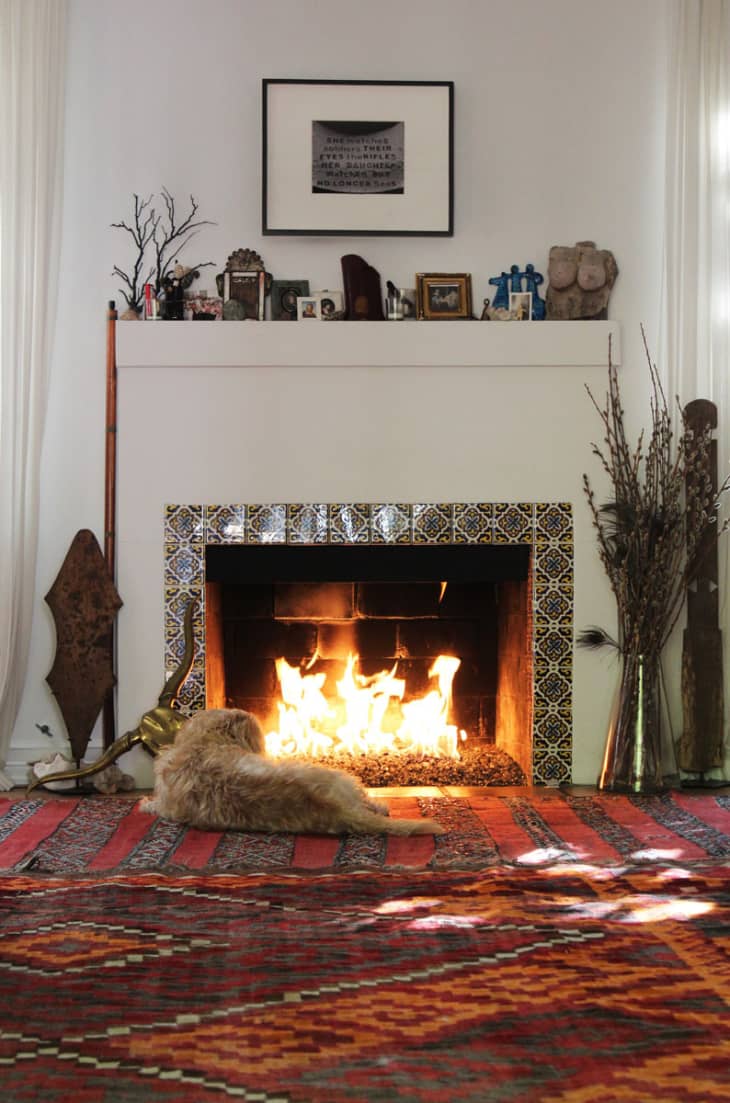Do It Now! Safety Check: Fire Dangers Hiding in Your Home

The chances of your home catching on fire are low. But even though fire safety has come a long way through the decades, it’s still something you should think of from time to time to make sure your home — and all your stuff in it — is as safe as can be.
The National Fire Prevention Association has deemed October 4th – 10th “National Fire Prevention Week.” The NFPA encourages everyone to make sure they have enough smoke alarms (in working order) in their home. I encourage folks to also take an inventory of any potential fire hazards that might be lurking in your home, whether you rent or own. If you find any hazards, consider making changes to make your home safer.
Bad/old wiring and old electrical outlets
According to the NFPA website, “about half (48%) of home electrical fires involved electrical distribution or lighting equipment.” In other words, moving into an old house means you might have some wires in the walls that are a fire hazard. You can get your home’s electrical wire system inspected to see if it needs updating. You can also do your part to inspect electrical outlets and replace any old or loose ones you come across. You can also make sure that you tackle lighting DIYs carefully and competently, and ask for help if you need it.
Stuff too close to your stovetop
“U.S. Fire Departments responded to an estimated annual average of 156,600 cooking-related fires between 2007-2011,” reports the the NFPA website. A lot of that comes from not realizing something flammable is close to an open flame or on stove. Or putting something on to cook and then walking away. Keep your cooking appliances clean so they’re operating optimally. Keep your kitchen uncluttered as you cook (the best you can) so nothing sits too closely to your stove while you cook. And try to keep a careful eye on the cooking as it happens.
Dryer lint
We’ve mentioned dryer link before — not cleaning out your dryer’s lint regularly can cause a backup of flammable lint that could ignite from a spark.
→ 8 Important Home Rules You Haven’t Been Following (It’s Ok, You Can Start Now)
Old appliances
Those charming vintage fans, record players and other attractive or very old electrical appliances you like the look of? Consider updating the internal wiring before using, and consider using only while you are in the room to watch.
Overloaded power strips and improperly used extension cords
We’ve also spoken about the dangers hiding in not using extension cords and power strips properly. Follow directions, don’t overload, use common sense when using extension cords to get electricity where you need them and don’t leave them unattended.
→ 8 Important Home Rules You Haven’t Been Following (It’s Ok, You Can Start Now)
Flammable objects and liquids near heat sources
Stacks of books near the fireplace, old, fast-to-heat up laptops on your bed, too-hot electrical blankets on the couch, piles of old dust near something that might spark — you want to identify the sources of heat in your home and make sure that they have plenty of room around them to operate safely, and don’t have flammable objects or liquids near them. If you have a garage, make sure you don’t have any gas cans or other flammable chemicals near something like a water heater, dryer or other heat source.
Not using your fireplace properly
Get an appointment to have your chimney cleaned out, make sure you know how to use your fireplace properly, keep flammable objects far away from any sparks and don’t leave a fire unattended.
Leaving candles and cigarettes unattended
The NFPA website reports that “on average, there are 29 home candle fires reported per day.” While that’s certainly not a ton, it’s still a fire danger, and should be taken seriously. According to the NFPA, “nearly three in five candle fires start when things that can burn are too close to the candle,” so make sure when you burn candles you burn them in a wide area that doesn’t have a lot of stuff around it. Don’t leave a candle burning in another room or overnight while you sleep. And watch those pets! Energetic dogs and curious cats can inadvertently knock over a candle and start a fire.
You can see more fire statistics, facts, tips and info on the NFPA website.
What would you add to the list?